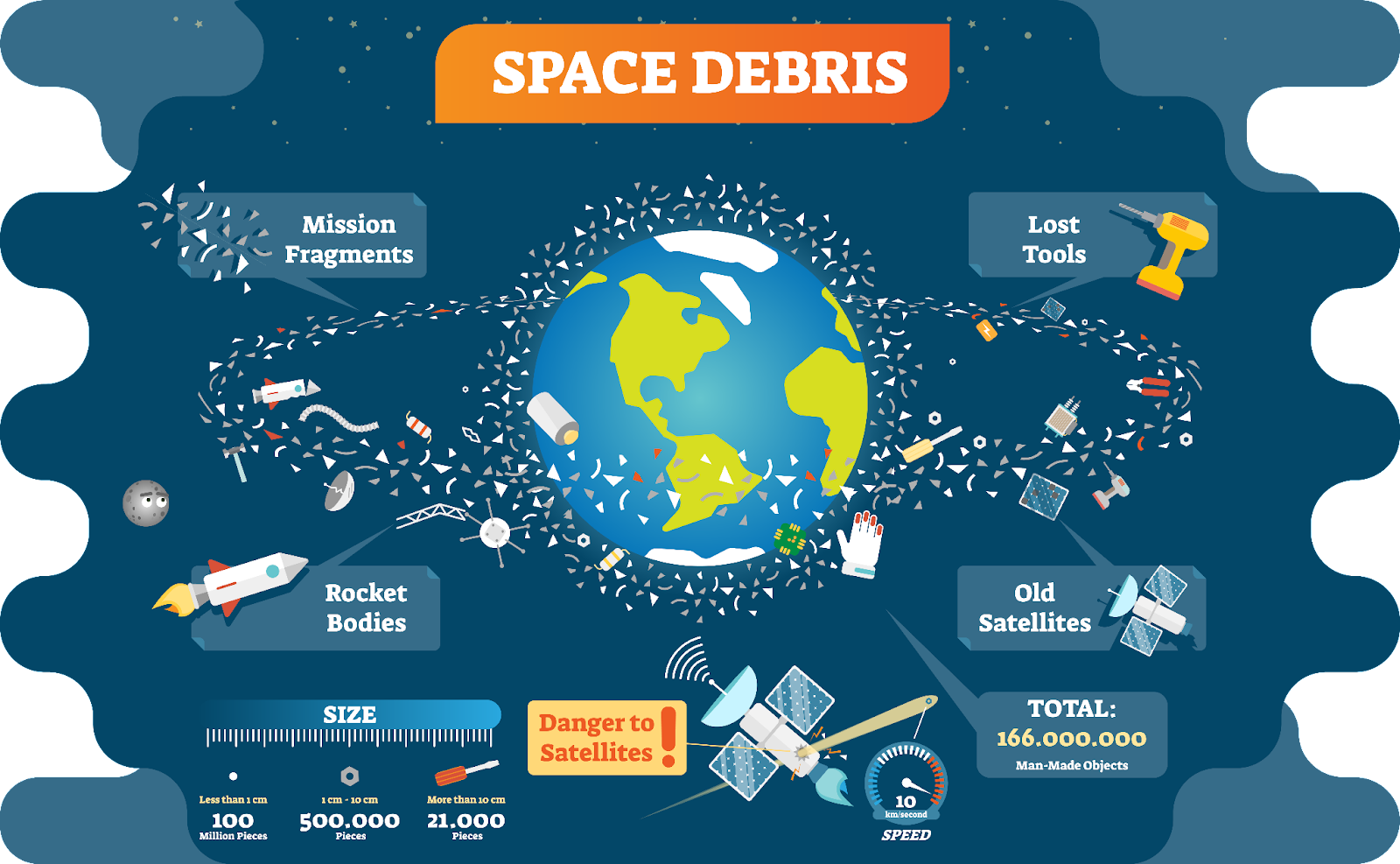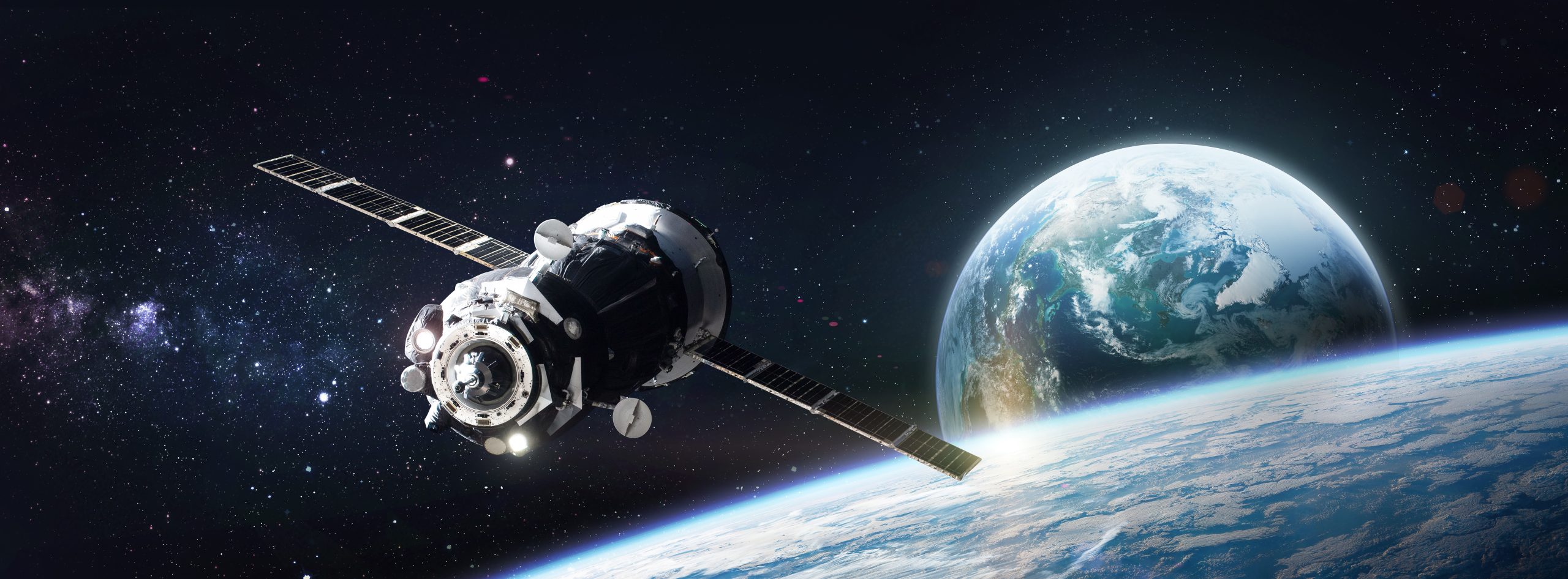For 66 years, humans have been shooting things into space. Much of it still floats above our heads.
The rapid growth of human activities in space, including satellite launches and space exploration, has led to the accumulation of space junk in Earth’s orbit. Space junk consists of defunct satellites, spent rocket stages, fragments from collisions, and other remnants of human-made objects in space. Space junk, also known as space debris, has become a growing concern. As the debris continues to accumulate, the potential for collisions and their associated risks increase.
Effects on Earth and Humanity
The problem of space debris arises from the increasing number of satellites and rockets launched into orbit and the lack of proper disposal mechanisms for decommissioned satellites and rocket stages. Right now, there are about 2,000 active satellites orbiting Earth and about 3,000 dead ones littering space. Collisions between space debris and operational satellites pose a significant threat to the sustainability of space activities and the safety of astronauts.
Collision Risks: Space debris poses a direct threat to operational satellites and spacecraft, leading to potential collisions that can generate even more debris. These collisions can result in the destruction of operational satellites, impacting communication, navigation, weather monitoring, and scientific research.
Kessler Syndrome: The accumulation of space debris has the potential to trigger the Kessler Syndrome, a scenario in which a cascade of collisions creates a self-sustaining and exponentially growing cloud of debris. This could make certain orbits unusable for future space missions and exacerbate the challenges of space traffic management.
Environmental Impact: The presence of space debris raises environmental concerns, as the debris can contribute to pollution in Earth’s orbit, specifically the stratosphere. The space junk is pumping metals into Earth’s upper atmosphere, and we do not yet know what the lasting effects this will have.
Mitigation Strategies
Ensuring a sustainable space environment requires a collective effort from the global space community. Continued research, technological innovation, and international collaboration are essential to addressing the challenges posed by space debris. As we venture further into space, responsible practices, and proactive measures will be crucial in avoiding a future where space debris becomes an insurmountable obstacle.
Active Debris Removal: Implementing technologies for actively removing space debris is crucial. Concepts such as space-based robotic systems and debris-capturing satellites are being explored to actively mitigate the existing debris population.
Improved Spacecraft Design: Designing spacecraft with end-of-life disposal in mind can help minimize the creation of new space debris. This could involve developing propulsion systems for deorbiting and considering materials less likely to fragment upon re-entry.
International Collaboration and Regulations: Strengthening international cooperation and establishing clear regulations for space activities are essential. This includes guidelines for responsible satellite deployment, debris mitigation practices, and consequences for non-compliance. In 1995, NASA was the first space agency to issue a set of orbital debris mitigation guidelines. Other countries have since followed suit.
Space debris presents a significant challenge to the continued use and exploration of space. Addressing this issue requires a multi-faceted approach, including active debris removal, improved spacecraft design, and international collaboration. By taking these steps, we can work towards minimizing the impacts of space debris on Earth and ensuring the long-term sustainability of space activities.





